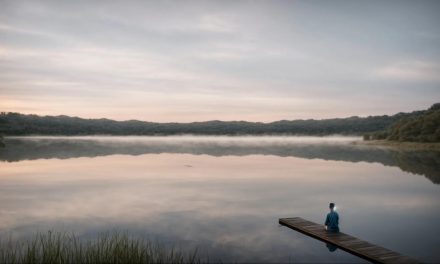Table of Contents
ToggleBeginner's Guide to Hiking: Get Started Today
Embarking on your first mountain trek can be as daunting as it is exhilarating. Have you ever been held back by uncertainty about what gear to pack or how to navigate trails safely? This guide is tailored to transform beginners into confident hikers, covering essential gear selection, basic orientation skills, and safety on the trail. As you absorb the insights here, not only will you learn to select the right backpack and use a map effectively, but you’ll also become well-acquainted with the local wildlife and hiking etiquette to enhance your outdoor experience. We’ll address common hurdles such as building trail fitness and staying safe in nature, ensuring that you’re fully prepped for an unforgettable adventure.
Start by Selecting Essential Hiking Gear for Beginners

As I embark on my hiking journey, selecting the right gear is my foundational step to a successful hike. Crucially, choosing the right hiking boot, such as a sturdy Merrell, ensures my feet are protected, whether I’m traversing forest trails or navigating through snow. I also need to dress in layers for adaptable comfort and pack essentials like water, snacks, and a basic first-aid kit. I can’t underestimate the importance of reliable navigation tools like maps or GPS and the value of safety gear. I’ll consider accessories, including trekking poles and headlamps, to enhance my hiking experience. Each piece of gear not only offers practicality and safety but also enriches my connection with the great outdoors.
Choose the Right Footwear for Your Hike
As I stand at the edge of a tranquil lake or gaze into the sprawling expanse of a canyon, I’m reminded that the foundation of every successful hike lies in the footwear I choose. My commitment to the “leave no trace” principles starts with selecting durable boots engineered to handle the rugged terrain while minimizing impact on the environment. A pair that fits well, supports my ankles, and provides ample traction can turn a daunting trek into a comfortable adventure.
Even on leisurely ski town trails or during a brisk hike across frosted valleys, the right footwear empowers me to face diverse conditions with confidence. As I consult a trail guide or a downloaded PDF of the area, I remain aware that my boots are an essential tool—just as critical as the map in my hand—for navigating safely and enjoying the journey ahead.
Dress Appropriately by Layering Clothes
When I find myself awestruck by the mist rolling off a distant waterfall or wandering through the untamed wilderness on the Appalachian Trail, the significance of layering becomes undeniably clear. The right combination of moisture-wicking base layers, insulating mid-layers, and waterproof outer layers serves as my personal armor against the unpredictable elements. This triad of clothing lets me adapt to changing conditions, from the damp, cool air near cascades to the crisp weather of higher elevations, ensuring my focus remains on the beauty around me rather than discomfort.
In the backcountry where weather can change as quickly as the terrain, my clothing choices are pivotal. I opt for a breathable, leather-reinforced jacket for durability and a vest for core warmth without inhibiting arm mobility. Such strategic dressing allows me to endure fluctuating temperatures with ease, transforming potential challenges into mere facets of an invigorating experience. With each step, I’m grateful for the protection my layers afford, enhancing my journey through nature’s expanses.
Pack Essential Items Every Beginner Should Carry
My preparation for a hiking excursion extends beyond personal attire, centering on a carefully packed backpack that holds essential items every beginner should carry. A hydration system, whether a reusable water bottle or a reservoir, is critical for staying hydrated across varying altitudes and climates encountered in national parks or on local trails. I also include nutrition-rich snacks which serve as fuel to sustain energy for the day’s adventure, delivering a necessary boost whether I’m leisurely walking or vigorously trail running.
In my experience, a well-stocked first-aid kit is indispensable on any hike, allowing me to address minor injuries promptly to prevent them from interrupting a recreational outing. Moreover, I ensure inclusion of a multi-tool and emergency whistle which provide practical support in unexpected situations, fostering a sense of preparedness that is vital for both personal safety and overall enjoyment within the hiking community.
Select Navigation Tools Like Maps and GPS
As I carefully plan my foray into outdoor recreation, the necessity for reliable navigation tools becomes clear. Especially within the often unpredictable landscapes of the United Kingdom, incorporating a compass and detailed maps from the National Park Service into my hiking gear arms me with the knowledge needed to explore safely. These tools, indispensable for the novice and expert alike, ensure that I can confidently find my way, even when mobile signals fail and landmarks are obscured.
Embracing the digital side of navigation, I’ve realized that a GPS device is a formidable ally in the wilderness. It helps pinpoint my location, offers real-time tracking, and even provides alerts on upcoming terrain changes. By integrating such advanced gear into my outdoor toolkit, I can navigate with precision, enjoying the natural beauty of my surroundings without the anxiety of getting lost or straying from the trail.
Include Safety Essentials Such as First Aid Gear
On my ascent towards the summit, I’ve learned that along with the necessary hiking boots and appropriate clothing, carrying safety essentials such as a first-aid kit is non-negotiable. When I explore the vast beauty of places like Zion National Park, a well-stocked first-aid box becomes as crucial as the trees for shade and breathability. Accidents, although rare, can happen anywhere, and being equipped with bandages, antiseptics, and tools for splints or tourniquets means I can swiftly respond to any injury, preventing a minor scrape from derailing an entire expedition.
During my treks across the diverse terrain of Georgia, my first-aid knowledge has been just as valuable as any piece of gear I’ve packed. I remember the relief of a fellow hiker when I could clean a wound properly after an unexpected stumble on the trail. That instance solidified my belief in the importance of not just having a first-aid kit but knowing how to use it effectively. These safety essentials ensure a confident and enjoyable hiking experience, allowing for adventurers to fully immerse themselves in the wonder of nature with a sense of security.
Consider Accessories Like Trekking Poles and Headlamps
My trek through Bryce Canyon National Park taught me the practicality of trekking poles, especially when navigating steep elevation changes. These poles offer stability crossing streams or rough landscapes, reducing the strain on my knees and back. Hiking with poles isn’t just about comfort; it’s a strategic choice to maintain balance and conserve energy over long distances.
Similarly, my first night hike revealed the importance of a quality headlamp. As I crossed a narrow bridge enveloped by darkness, the headlamp became my guiding light, ensuring each step was made with confidence. Headlamps are more than convenience; they’re an essential gear piece for safety during low-light conditions, ensuring you can always see the trail ahead.
Armed with the right gear, your foray into the wild begins. Now, let’s chart the course for your maiden trek, step by resolute step.
Plan Your First Hiking Adventure Step by Step

Preparing for my first hiking adventure begins with thoughtful planning to ensure a safe and enjoyable experience. I’ll start by selecting a beginner-friendly trail, perhaps a gentle rail trail in Germany or France, where navigation is straightforward and the scenery breathtaking. Checking the local weather forecast is next, crucial for dressing appropriately and avoiding unexpected conditions. I’ll always share my itinerary as a safety precaution, informing others of my plan. Time management is vital too, so I’ll schedule my hike, allowing ample opportunity to enjoy the trail without rushing. Proper hydration and snacks keep me energized, recognizing water is as critical as a well-curated first aid kit. Lastly, I adhere to trail etiquette and understand regulations to respect the environment and fellow hikers. These steps are my blueprint for a memorable outdoor adventure.
Select a Hiking Trail Suitable for Beginners
Embarking on my first hiking adventure, I understand the allure of popular spots like Great Smoky Mountains National Park. However, as a beginner, I choose trails known for their manageable pathways and clear signs, making sure the transition from sneakers to hiking boots is both comfortable and safe. I ensure my gear, especially my first aid kit, is suitable for the trail conditions, reassuring me that I am equipped to handle any basic medical needs that might arise.
Understanding trail etiquette is paramount, and as I set my sights on serene locations such as Arches National Park, it’s about more than appreciating natural beauty. It’s about reciprocating respect to the environment and fellow hikers. I carefully research each trail ahead of time, factor in rest breaks, and strictly adhere to the guidelines shared by park rangers, making my inaugural hike not just a personal accomplishment but a contribution towards preserving these pristine landscapes.
Check the Weather Forecast to Prepare
Before I set foot on any trail, I make it a point to check the weather forecast meticulously. This simple action can determine whether I enjoy a sunny afternoon around a tranquil pond or face unexpected challenges while mountain biking through the alps. Acknowledging that conditions can change swiftly, especially within mountainous terrain, allows me to pack smart, including items to manage potential ice, high winds, or sudden downpours, thereby ensuring my safety and comfort throughout the hike.
My firsthand experiences have reiterated the significance of respecting the power of nature. Especially in the alps, where the weather can be as unpredictable as the terrain is diverse, staying informed through local forecasts enables me to prepare for possible inclement weather. This foresight is particularly pivotal when ice or thunderstorms are on the horizon, as it guides me to postpone or adjust my plans to avoid getting caught in hazardous conditions.
Notify Others by Sharing Your Itinerary
Before embarking on a hike, sharing my detailed itinerary with friends or family is a step I never overlook. This remains especially relevant if my trail of choice includes challenging navigation or steep cliffs, such as those in Yosemite National Park. Informing others of my departure, planned route, and expected return time provides a safety net that underpins the entire hiking exercise, irrespective of whether I’m taking a leisurely sport walk or a strenuous mountain trek.
My firsthand experience has taught me the value of this practice; once, when a hike took longer than expected due to a mesmerizing sunset that captivated my attention, those I had informed were invaluable in ensuring my safe return. Such a simple precaution safeguards not only my wellbeing but also brings peace of mind to my loved ones, making sure that time spent indulging in the sport of hiking is done so without undue worry.
Schedule Your Hike With Time Management
During my visit to Emerald Lake in Canada, I realized that effective time management is as crucial as any gear I packed. I planned my hike to ensure ample daylight to complete my journey, accounting for any delays that uneven terrain or unexpected bouts of rain might impose. Through this, I avoided hiking in darkness, preserving energy and mitigating waste from a potentially prolonged adventure due to poor visibility.
Indeed, when timing my hikes, I factor in not just the road traveled but the rest stops and moments of awe certain to arrest me along the way. Starting early and overestimating the time needed helps me absorb the splendor without rushing, ensuring the only thing I leave behind when the sun sets are footprints and the only thing I take, memories.
Stay Hydrated and Energized With Food and Water
On my hikes, maintaining hydration and energy is as vital as wearing my favorite Merrell Moab 3 boots. I’ve learned to pack my hiking backpack with enough water—usually a liter for every two hours—and snacks that provide sustained energy, like nuts and granola, to fuel each stride. This attentive approach ensures I don’t find myself fatigued or dehydrated, a predicament that could overshadow the splendor of my outdoor pursuits.
Moreover, when the sun’s rays stretch across the horizon, I find sunscreen crucial in my regimen, similar to how I never forget a foot care kit for unexpected blisters. I’ve seen how staying protected and energized yields a more enjoyable hike, allowing me to savor every moment without discomfort or exhaustion derailing my plans. It’s a simple but effective strategy that I would share with any aspiring hiker excited to explore the trails.
Understand Trail Etiquette and Regulations
As I plan my hiking trips to iconic trails like the Tour du Mont Blanc or the Everest Base Camp Trek, I’ve come to understand the critical importance of trail etiquette and park regulations. Wearing my durable Merrell Moab 2 boots and comfortable hiking shorts, I’m prepared not just for the hike itself, but to adhere to the ‘leave no trace’ principles that protect these magnificent landscapes for future generations. It’s about more than dressing the part; it’s about respecting the trail by staying on marked paths, managing waste properly, and being considerate of wildlife and fellow hikers.
In my journey, every step, each with the trusted grip of my Merrell Moab shoes, is a reminder to abide by the guidelines set forth by local authorities, understanding that these are in place not to restrict, but to enhance the hiking experience while preserving the environment. My firsthand experience has shown me that being well-versed in the regulations specific to a trail, whether it’s a requirement for hiking permits or knowing the right-of-way order on busy paths, contributes to a safe and harmonious adventure for everyone involved.
Now that your adventure is planned, don’t let guard down. Safety is the trail’s silent partner, ever critical for the journey ahead.
Understand Hiking Safety to Stay Safe on the Trail

Stepping onto the trail, I recognize the imperative of hiking safety, a fundamental aspect of any beginner’s guide. Planning to undertake iconic paths like the Inca Trail, assessing my fitness level is the first step, ensuring I hike within my abilities, donning my Salomon X Ultra 4 Mid GTX for support. I’m keenly aware of the need to identify trail hazards, reinforcing the importance of awareness that complements the stability offered by trekking poles. Embracing the Leave No Trace principles, I safeguard the pristine beauty I venture into. A first aid kit accompanies me for minor injuries, while confident navigation is critical to avoid the disorientation that even a well-marked path can present. Lastly, my preparedness for emergencies underscores the serenity I find in nature, undisturbed by potential mishaps. This section delves into each of these safety precautions—integral for any hiker stepping into the embrace of the great outdoors.
Assess Your Fitness Level to Hike Within Your Abilities
Before my ambitious aim to conquer the Inca Trail to Machu Picchu, I prioritize the assessment of my fitness level to ensure I’m embarking on hiking trails suited to my capabilities. Wearing my supportive Salomon X Ultra 4 Mid GTX boots, I embark on local hikes to gauge my stamina and strength. This proactive approach allows me to scale my activities in line with endurance and to avoid the pitfalls of overexerting myself, which is key when plotting journeys through such demanding terrain.
Recognizing the importance of hiking essentials, I’ve learned to tailor my hikes according to my physical condition, factoring in both elevation and distance. During my preparations, adequate hiking equipment plays a vital role; however, the realization dawned on me that matching my hikes with my personal fitness level is an indispensable part of the equation. Through this practice, I’ve improved steadily, ensuring I’m equipped not just with the right gear but also with the fitness needed for a safe and enjoyable outdoor experience.
Identify Trail Hazards to Stay Aware of Surroundings
On my first trek with the Asolo Fugitive GTX boots laced up firmly, I quickly realized the importance of staying vigilant and spotting trail hazards. The grippy soles offered excellent traction but to truly ensure safety, I needed to be conscious of my surroundings. From loose rocks that could roll underfoot to overhanging branches at eye level, I learned that an attentive gaze was as crucial for my wellbeing as the robust construction of my footwear.
Similarly, when I slipped on my Merrell Men’s Moab 2 and set out across varied landscapes, I understood that identifying potential hazards extended to understanding terrain and wildlife. Wet ground after a rain could spell slippery conditions, and knowing the habitats of local fauna could prevent startling encounters. My commitment to awareness meant I could fully appreciate the trek without unwanted surprises, all thanks to a clear understanding of the environment and the support of my trusty Moab 2’s.
Protect Nature by Following Leave No Trace Principles
During my rambles through verdant forests and treks up rugged peaks, I’ve embraced the Leave No Trace principles with fervor. Ensuring that the only evidence of my passage through natural settings is the memories I carry allows me to protect the very landscapes that inspire and invigorate countless hikers. These guiding principles, from disposing of waste properly to minimizing campfire impacts, are critical habits that benefit both the environment and the outdoor community.
My adherence to minimizing my presence is evident as I tread lightly, avoiding delicate undergrowth and staying on established trails. By following these core principles, I safeguard the habitats I’m privileged to visit and encourage flora and fauna to thrive unimpeded. This responsible approach to hiking ensures that future adventurers can enjoy the untouched beauty of the trails just as I have.
Carry a First Aid Kit for Minor Injuries
In my early days of trekking through rugged terrain, I’ve found that having a first aid kit for minor injuries is indispensable. A sprain or a cut can occur at the most unforeseen moments, and a kit equipped with antiseptic wipes, bandages, and anti-inflammatory medication allows me to tend to such injuries immediately, preventing them from escalating into larger issues. This simple measure of preparedness affirms my commitment to safety and ensures uninterrupted enjoyment of the hiking experience.
I’ve learned through personal experience that knowledge of basic first aid is tantamount to carrying the kit itself. Once, when a fellow hiker encountered a minor fall resulting in a superficial laceration, my ability to apply proper wound care was vital. It’s this combination of readiness and know-how that transforms a good hiking trip into a great one, radiating the confidence needed to safely navigate the trails and focus on the adventure at hand.
Navigate Confidently to Prevent Getting Lost
As I traverse winding trails and embark on new terrains, confident navigation stands paramount to prevent getting lost. I’ve learned the importance of acquainting myself with the trail route beforehand and always taking a map or GPS device as allies against disorientation, practical steps that translate into peace of mind as I explore the great outdoors. Familiarity with navigation tools, and not solely relying on marked paths, empowers me to hike with assurance, turning what could be a nerve-wracking journey into an empowering adventure.
My personal trekking routine includes a thorough pre-hike study of trail features and waypoints, which equips me to anticipate turns and landmarks effectively. This practice nurtures a natural sense of direction, reducing the likelihood of losing my way, especially in areas where trails are less marked. Encountering a fork or an unexpected clearing becomes less daunting with this preparation, ensuring my hiking experiences are characterized by enjoyment and safety, rather than uncertainty and risk.
Handle Emergencies With Preparedness
In my preparations for hiking, I understand that emergencies can arise without warning, and readiness is key to mitigating their impacts. Carrying an emergency beacon or satellite communicator on remote trails, for instance, allows me to send an S.O.S. even when cell reception is non-existent. My resolve to be prepared reflects a commitment to safety that brings peace of mind, enabling me to face unexpected situations with a level head and clear strategy.
On a particularly challenging hike, I once witnessed the swift onset of adverse weather that left many unprepared; it was a stark reminder of nature’s unpredictability. From that point on, I’ve ensured my hiking pack includes not only a map and GPS but also an emergency shelter and fire-starting implements, equipping me to handle sudden changes in the environment. These precautions fortify my ability to stay safe on the trail and maintain the enjoyment of hiking, regardless of circumstances.
Safety is paramount when wandering the wilds; knowledge is your ally. But strength and endurance, forged over time, are what carry you forward.
Build Hiking Fitness to Prepare Your Body for the Trail

To embark on the rewarding activity of hiking, it is essential to build proper fitness. I begin with regular walking to incrementally increase my endurance, vital for longer treks. Incorporating strength exercises tailored for hikers enhances my muscle resilience, while practicing with my pack accustoms me to the extra weight I’ll carry. I never neglect warm-up and cool-down stretches to prevent injuries, and maintaining hydration is a constant focus. Lastly, allowing adequate recovery time is key to realizing fitness gains. These foundational steps are pivotal in preparing my body for the trails ahead.
Begin Regular Walking to Increase Endurance
As a novice hiker, I’ve found that initiating my fitness regime with regular walking is an effective method for building endurance. Gradually increasing the length and intensity of my walks prepares my body for the continuous exertion required on longer hikes, simulating the stamina needed for undulating trails and extended durations. This practice serves as the cornerstone for developing the cardiovascular strength that will support my hiking aspirations.
During my walks, I emphasize consistency and progression, mindful of the correlation between my walking habits and trail readiness. By incorporating varied terrain into my routine, such as walking on inclines and uneven surfaces, I prepare my muscles and joints for similar conditions encountered on hikes, thus enhancing my physical preparedness and ensuring I can tackle beginner trails with increased confidence and condition.
Strengthen Muscles With Exercises for Hikers
In my quest to prepare for hiking, I’ve incorporated specific strength exercises aimed at hikers into my fitness routine. Squats and lunges have become a regular part of my workouts, targeting the leg muscles that I rely on to power me up and down trails. These exercises enhance my endurance and prevent muscle fatigue, vital components that have improved my overall hiking performance.
Equally critical to building hiking fitness is strengthening my core. I focus on exercises like planks and dead bugs to develop a stable core, which helps maintain balance on uneven terrain and supports my back when carrying a backpack. Strengthening these muscles has not only boosted my hiking stamina but also has reduced my risk of injury, enabling me to tackle longer and more challenging hikes with confidence.
Practice With Your Pack to Get Used to Carrying Weight
As I progressed in my hiking activities, I realized that one of the best preparations was to practice with my pack. Gradually adding weight and carrying it on my walks simulated the experience I would face on an actual hike, training my body for the additional load. This conditioning was invaluable, allowing me to adjust to the feel and balance of a loaded pack, ensuring that my first trail experience was not hampered by an unfamiliar weight on my shoulders.
With each training walk, I made it a point to incrementally increase the weight in my backpack, gauging my body’s response to the extra strain. This mindful approach allowed me to fine-tune my endurance and strength to support extended periods of carrying necessary gear and supplies. Not only did this enhance my physical readiness, but it also instilled a confidence that I could comfortably handle what was required for longer hikes and more challenging trails.
Stretch Properly With Warm-Up and Cool-Down Routines
Initiating my hiking treks with dedicated warm-up routines has significantly enhanced my overall endurance and flexibility. These pre-hike stretches, focusing on the legs, hips, and lower back, prime my muscles to handle the varying demands of the trail, from steep ascents to meandering paths. I’ve found that starting each hike with limber muscles not only prepares me physically but also centers my mind for the journey ahead.
Similarly, I’ve integrated cool-down stretches post-hike to aid in recovery and minimize muscle soreness. Paying particular attention to the calves, hamstrings, and quadriceps, I ensure that my body eases back into a state of rest, reducing the risk of next-day stiffness. Through this routine, I’ve noticed improved agility and a smoother transition back to daily activities, making it an invaluable part of my hiking regimen.
Maintain Hydration With Proper Fluid Intake
Integrating proper hydration habits into my fitness training is a key element in preparing my body for the trail. I’ve experienced firsthand how even mild dehydration can lead to fatigue and decreased performance, which are setbacks any beginner hiker wants to avoid. By ensuring I consume a suitable amount of fluids before, during, and after my training walks, I set a solid foundation for sustaining energy levels and promoting overall health.
Dedicating attention to fluid intake isn’t just about drinking water; it’s about understanding the balance required for optimal hydration. On my longer training sessions, I carry electrolyte solutions to replenish the salts lost through sweat, an insight I picked up from seasoned hikers. This practice keeps me well-hydrated and better equipped to tackle the varying demands of different hiking trails with vigor and vitality.
Allow Recovery Time for Fitness Gains
In my journey to build hiking fitness, I’ve learned the necessity of allowing my body recovery time to translate effort into gains. After an intense hike or a strenuous strength training session, giving my body a chance to rest and repair is imperative. This respite is when muscles fortify, adapting to the demands of hiking, improving strength, and reducing the risk of injury on future trails.
My personal experience has taught me that rest isn’t idle time; it’s a vital component of a well-rounded hiking fitness routine. Ensuring I get adequate sleep, intersperse rest days with workout days, and employ active recovery techniques are strategies that have enhanced my endurance on the trail. It has allowed me to progress in my hiking pursuits with greater ease and less fatigue, revealing just how significant recovery periods are to achieving my outdoor goals.
Your muscles are primed for the journey; strength is not solely about the climb. Next, let’s master the maps, those silent guides through nature’s vastness, ensuring every step has direction.
Navigate Hiking Trails With Map Reading and Orientation Basics

Navigating the trails as a beginner hiker involves grasping essential skills like understanding trail map symbols and contours, staying on course using a compass, and effectively using GPS technology. Recognizing trail signs and blazes becomes second nature with practice, as does planning routes based on distance and elevation. Most importantly, keeping track of my location ensures I stay oriented and enjoy a safe hiking experience. The following sections will provide me with the know-how to confidently navigate as I explore the outdoors.
Read Trail Maps by Understanding Symbols and Contours
Deciphering trail maps is my initial step towards independent hiking. These maps, replete with symbols and contour lines, give me insight into the terrain’s details, such as elevations, water bodies, and types of trails. Through understanding the meanings behind each symbol and how contour lines illustrate the lay of the land – closer lines meaning steeper ascents – I gain the confidence needed to plan my route and anticipate the physical demands of my hike.
Reading a map effectively allows me to visualize the trail before setting foot on it. By recognizing symbols for campsites, viewpoints, and potential hazards, I prepare myself for a well-informed adventure. Mastery of map contours not only guides me through elevations and dips in the landscape but also aids in keeping me on the correct path, ensuring a safer and more enjoyable hiking experience.
Use a Compass With Simple Techniques for Direction
Mastering the use of a compass is a fundamental skill I’ve honed for successful navigation on the trail. The compass, an essential tool for orientation, helps me identify my heading and ensures that I’m progressing towards the correct direction. By aligning the compass needle with magnetic north and orienting the map accordingly, I can establish my bearing and connect this to my intended route, guaranteeing that I stay on track even in areas where the trail isn’t clearly marked.
In my experience, practicing simple compass techniques before a hike has been invaluable. For instance, I’ve learned to take a bearing from the map, a method where I align the edge of the compass with my intended line of travel, rotate the dial until north on the map matches the compass needle, and then follow the direction indicated by the compass arrow. This skill has allowed me to traverse unfamiliar terrain with confidence, eliminating the worry of losing my way and letting me fully enjoy the immersive experience of exploring nature.
Navigate With GPS by Utilizing Technology Wisely
As I venture into the wonders of the wild, I’ve come to value GPS technology as a pivotal tool in my hiking repertoire. It offers real-time location tracking and trail mapping that bolster my orientation skills, particularly on backcountry treks where traditional signposts are scarce. By savvy utilization of GPS apps and devices, I navigate trails with precision, ensuring safe passage through the natural landscapes I yearn to explore.
My practice of using GPS wisely includes downloading maps for offline use, recognizing that connectivity in remote areas can be unreliable. This forethought has been instrumental in maintaining my course when cloud cover or dense foliage disrupt GPS signals. As I blend GPS technology with classic map reading, I create a robust navigation strategy that fortifies my confidence as a beginner hiker, enabling a seamless transition from screen to scenery.
Follow Trail Signs by Recognizing Markings and Blazes
My personal trekking experiences have taught me the significance of trail signs and blazes, which are crucial navigational aids for hikers of all levels. These markers, painted or carved on trees and rocks, often in bright colors to maximize visibility, guide you along the path, signaling turns, intersections, and sometimes even alerting to nearby amenities. Recognizing these markers is vital, for they keep me confidently moving in the right direction without the second-guessing that can shift focus away from the natural beauty surrounding me.
As I walk, I keep an eye out for the rectangular blazes that indicate the trail, understanding that variations in color and shape have specific meanings—the monochrome blazes denote primary trails, while blue often leads to water sources or scenic views. This understanding has enabled me to navigate complex trail systems without undue stress, enhancing my hiking experience and fostering a deeper connection with the wilderness as I explore new terrains.
Plan Your Route by Calculating Distance and Elevation
Planning my hiking route, I take the time to measure both distance and elevation using topographic maps or a digital navigation app. I consider the total mileage and evaluate the elevation profile, which helps me predict the hike’s difficulty and the time needed to complete it. This careful calculation allows me to choose a path that is within my physical limits and time constraints, ensuring a fulfilling and safe outdoor experience.
By estimating distance and elevation gain, I’ve learned to pace myself effectively, conserving energy on steep climbs and enjoying easier stretches. My past treks have taught me that understanding the terrain’s ups and downs prevents overexertion and the risk of altitude sickness, essential considerations for my well-being on the trail. This insight guides me to gradual elevation increases when planning new routes, aligning with my body’s acclimatization capabilities.
Keep Track of Your Location to Stay Oriented on the Trail
Throughout my explorations, I’ve come to appreciate the criticality of regularly pinpointing my location on a map to maintain orientation on the trail. This practice has become second nature, providing me with confidence and ensuring I don’t deviate from my planned route. By consistently cross-referencing nearby physical landmarks against my map, I ensure I’m exactly where I need to be, which is especially reassuring in dense forests or during inclement weather when visibility is compromised.
On more than one occasion, I’ve relied on triangulation techniques to confirm my location while hiking in unfamiliar territory. By identifying and using at least three known points on the landscape, then aligning these with my paper map or digital device, I establish my current position with precision. This skill has not only prevented me from losing my bearings but has also empowered me to track progress and make informed decisions about rest breaks and pace, contributing to a safer and more enjoyable hike.
Mastering the art of map reading takes you deep into the wilderness. Let us tread lightly on that same path, learning to respect the trails and those we share them with.
Enjoy Nature Responsibly With Hiking Etiquette for Beginners

As a beginner hiker, I understand the importance of hiking etiquette—not only for personal enjoyment but for the preservation of nature. Observing wildlife from a distance respects their habitat, while staying on designated paths prevents environmental damage. Knowing right-of-way rules, keeping noise to a minimum, leaving what I find, and carrying out all trash are practices that ensure a responsible and fulfilling hiking experience for all.
Observe Wildlife Respectfully by Keeping a Safe Distance
On my first hiking trip, I was instantly enamored with the wildlife gracing the landscapes, but I quickly understood the importance of observing animals from a safe distance. This practice not only protects their natural behaviors but also ensures my safety and the well-being of the ecosystem. As I silently watch a family of deer or a rabbit nibbling on foliage, I feel a profound responsibility to maintain the sanctity of their home by minimizing my presence and avoiding any disturbance to their habitat.
Witnessing a bird of prey in flight or the rustling of a bush as a small critter scurries away heightens the sense of awe on my hikes. I’ve learned to keep a respectful distance, leveraging my binoculars for a closer look without encroaching on their territory. It’s this conscious choice that allows me to be a responsible steward of the trails, fostering a harmonious coexistence with nature that enriches my hiking adventures both ethically and spiritually.
Stay on Designated Paths to Prevent Environmental Damage
On my hiking ventures, I abide by the credo to stay on designated paths at all times to prevent environmental damage. Veering off the trail can lead to soil erosion, vegetation damage, and disrupted habitats, undermining the natural area’s integrity—a lesson I learned early on. By respecting path boundaries, I help preserve the delicate ecosystems and ensure that the trails remain beautiful and accessible for future nature enthusiasts.
I recall a specific instance where I witnessed the consequences of straying from established trails, marked clearly for this purpose. The resulting damage to the undergrowth was a stark reminder that my individual choices can significantly impact the environment. Such experiences fortify my commitment to following hiking etiquette for beginners, safeguarding the natural splendor that brings such joy to my outdoor pursuits.
Share the Trail by Understanding Right-of-Way Etiquette
As I navigate bustling trails, I’ve learned that understanding right-of-way etiquette is crucial for a harmonious experience. When I meet someone on a narrow path, I remember the hiking community’s guideline: those ascending have the right of way. By following these practices, I contribute to a respectful sharing of the trail, allowing fellow hikers to move efficiently and safely without interruption.
My first encounter with equestrians and mountain bikers on shared trails highlighted the importance of step-aside etiquette. Hikers like myself yield to these trail users due to their larger profile and momentum, ensuring a safe passage for all. It’s this knowledge and its application that guarantee a cooperative atmosphere, reflecting my respect for both the environment and other trail enthusiasts.
Keep Noise Levels Down to Enjoy the Sounds of Nature
On my inaugural hikes, I’ve discovered that maintaining low noise levels is not just a courtesy to fellow nature enthusiasts, but a means to fully immerse oneself in the tranquil soundscape of the outdoors. This practice enhances my connection to the environment and provides the chance to observe wildlife that might otherwise be disturbed by loud sounds. As I tread softly and speak in hushed tones, I enjoy the rustling leaves, flowing streams, and distant bird calls—the true symphony of nature that can only be appreciated in serenity.
Regaling friends with tales of the trail is undoubtedly a joy, yet I’ve learned that saving these exchanges for the journey’s end preserves the calming ambience sought by many who take to the trails. Engaging in this silent reverence as I hike not only demonstrates respect for the natural setting but also opens a gateway to a more profound, undisturbed experience of the wilderness. It’s in these moments of peaceful contemplation that the subtle heartbeat of the forest becomes discernible, rewarding the quiet observer with its elusive beauty.
Leave Natural Objects and Take Only Photos
During my explorations, I’ve embraced the principle of leaving no trace, which extends to the natural treasures I encounter. I resist the temptation to take home physical mementos of my journey; instead, I capture the moment with photographs. This mindful practice preserves the integrity of the ecosystem and allows future hikers to discover the same untouched beauty I had the privilege to witness.
I’ve learned that the smallest action, like pocketing a seemingly insignificant pebble, can have a ripple effect on the environment. By photographing the vibrant wildflowers or the intricate patterns on a leaf, I document my experience without disrupting the delicate ecological balance. This not only aligns with responsible hiking etiquette but also reflects my deep respect for the natural landscapes that offer solace and adventure to all who wander through them.
Pack Out Trash to Dispose of Waste Responsibly
In my own pursuits along various trails, I’ve come to recognize the critical importance of packing out all trash to maintain the pristine nature of the hiking environment. This habit ensures that the landscapes remain undisturbed for wildlife and other hikers, and it helps prevent pollution of these cherished natural spaces. My commitment to dispose of waste responsibly is a fundamental principle of my hiking ethos, knowing that the actions of each individual collectively contribute to the health of our ecosystems.
On the trails, I’ve often carried an extra bag specifically for litter – be it my own or remnants left by others – as a tangible expression of respect for the environment. This simple yet effective practice enhances not only the cleanliness of hiking areas but also fosters a culture of responsibility and stewardship amongst the hiking community. By adopting this approach, I ensure that my outdoor activities leave no trace, setting an example for beginner hikers and protecting the integrity of the natural world I so love to explore.









